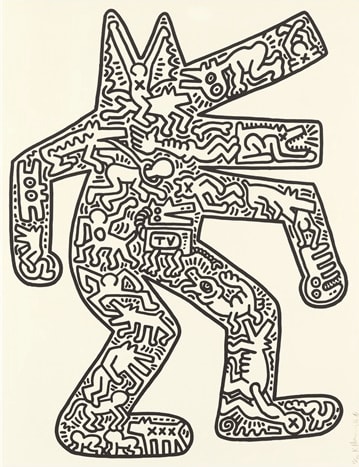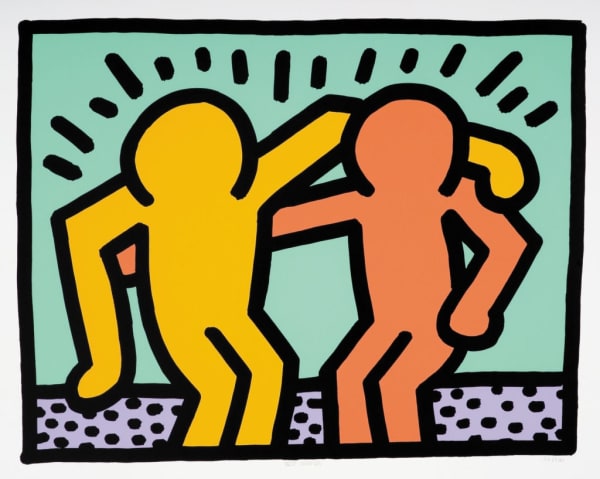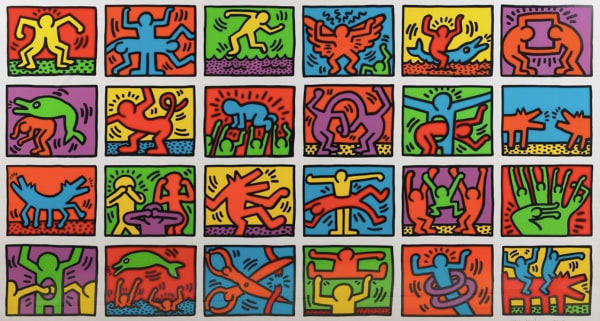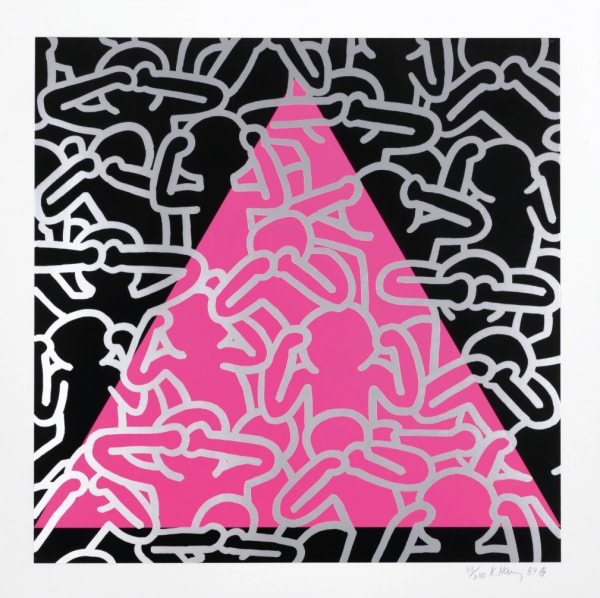Keith Haring Standing Dog (Black and White)

Keith Haring
114.3 x 90.2 cm
Keith Haring’s Dog (1985) is one of the most recognizable symbols within his expansive visual lexicon. The barking dog icon, with its bold, simplistic lines and dynamic posture, became a signature motif in Haring’s art. Often rendered in vibrant colors and thick black outlines, the dog is depicted mid-bark, a dynamic representation of energy and aggression, resonating with themes of power, authority, and rebellion. This image evokes a primal form of expression, which, in Haring’s work, taps into both the joy and the urgency of communication in an increasingly chaotic and politicized urban landscape.
The dog motif, repeated throughout Haring's career, serves as both a playful and profound element in his body of work. Haring utilized his iconic dog as a bridge between viewers and the messages he embedded within his art, often using it to comment on power dynamics in society. The barking dog can represent marginalized voices shouting to be heard or, alternately, a symbol of oppressive forces. By simplifying the figure to its bare essentials, Haring transforms a universal animal into a tool for exploring various social themes, from authority and control to freedom and resilience.
In the broader context of Haring’s art, the dog motif aligns with his desire to create a "language" that could communicate across cultural and linguistic barriers. The dog’s bark becomes an expression of protest and resilience, echoing the artist's own outspoken advocacy for issues like gay rights and AIDS awareness. By repeating this symbol across various works, Haring maintained a continuity in his visual language, allowing viewers to recognize and interpret these elements within the contexts of the social or political messages he wished to convey.
Dog (1985) thus captures the duality of Haring’s work—its simplicity and complexity, playfulness and gravity. Through this piece, Haring reminds us of the power of visual symbols to communicate beyond words, inviting viewers to engage with the immediacy of his lines and the richness of his thematic explorations. The dog, both accessible and layered, embodies Haring’s commitment to art as an agent for social connection, rebellion, and dialogue.
Join our mailing list
* denotes required fields
We will process the personal data you have supplied in accordance with our privacy policy (available on request). You can unsubscribe or change your preferences at any time by clicking the link in our emails.
This website uses cookies
This site uses cookies to help make it more useful to you. Find out more about cookies.




